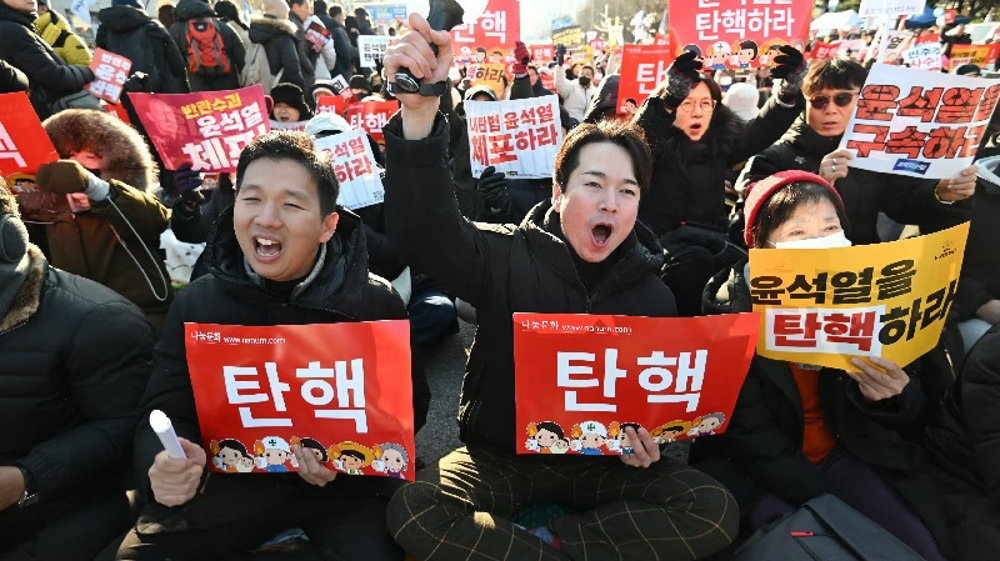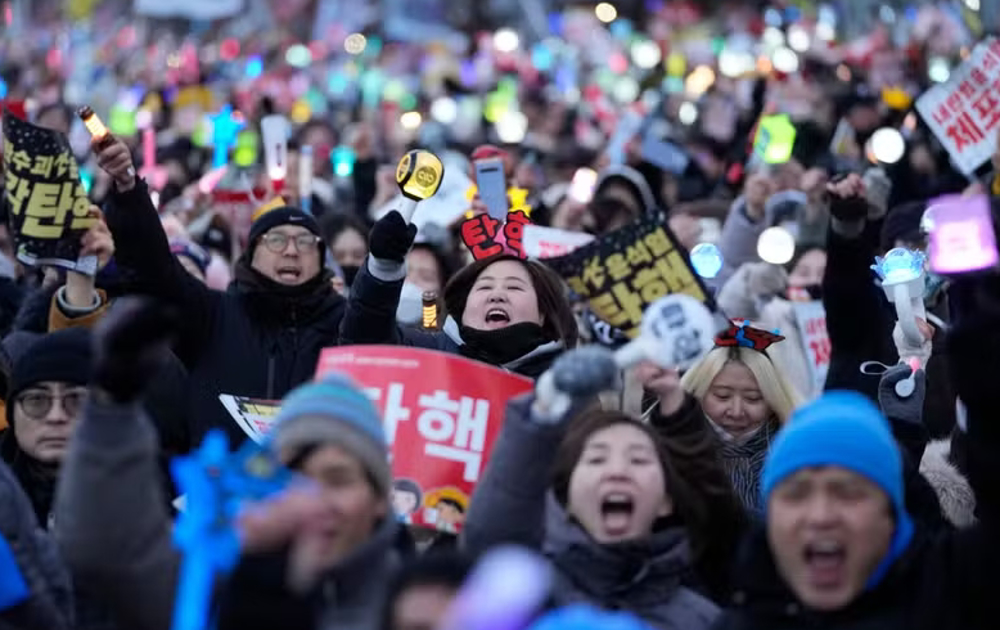UNSC to hold emergency meeting over latest N Korea missile test
The United Nations Security Council is set for a closed-door meeting over North Korea's latest missile tests that have been seen as a breakthrough in the North's missile program.
According to council diplomats on Sunday, the meeting was requested by the US, Japan and South Korea after Washington and Seoul confirmed that Pyongyang had tested another medium-range missile earlier in the day.
The North's State-run Korean Central News Agency (KCNA) noted that the test was overseen by the country's leader Kim Jong-un. The KCNA added that the tested projectile was a Pukguksong-2 which uses solid-fuel for propulsion.
"Saying with pride that the missile's rate of hits is very accurate and Pukguksong-2 is a successful strategic weapon, (Kim Jong-un) approved the deployment of this weapon system for action," said the news agency. "Now that its tactical and technical data met the requirements of the party, this type of missile should be rapidly mass-produced in a serial way to arm the KPA Strategic Force," Kim added.
The US Pacific Command announced that it had tracked the projectile before it fell into the sea.
The South's Joint Chiefs of Staff also announced that the missile had traveled about 500 kilometers eastwards before landing in the sea.
Last week, the UNSC demanded that North Korea halt its nuclear and ballistic missile tests in a unanimously agreed statement, in which it condemned the test, and stressed that the North should show “sincere commitment to denuclearization through concrete action and stressed the importance of working to reduce tensions."
Read More:
- North Korea test-fires what appears to be ballistic missile
- UNSC slams North Korea’s latest missile tests
The latest test came less than a week after the North test-fired a Hwasong-12 intermediate-range missile, which landed in the sea between North Korea and Japan on May 14.
According to analysts, the test was a breakthrough in the North's missile program as it successfully reached an altitude of 2,111.5 kilometers and traveled a distance of 800 kilometers before breaching Japan's Air Defense Identification Zone and crashing in the Sea of Japan.

Pyongyang state media also reported that the missile -- allegedly capable of carrying a "large-size, heavy nuclear warhead" -- had successfully passed "the worst re-entry situation" and reached its intended destination.
Seoul sources have also confirmed the warhead had survived the 5,000 degrees Celsius and extreme vibration on its steep parabolic route to reentry -- a task which had been considered one of the most difficult challenges for the North to overcome in its missile development program.
Read More:
The North, already under an array of sanctions for its missile and nuclear programs, says it is developing arms as deterrence against the US threat. North Korea has also said that it would not abandon its missile and nuclear programs unless the US ended its hostility toward Pyongyang.
Unsettled by North Korean missile and military nuclear programs, the United States has adopted a war-like posture, sending a strike group and conducting joint military drills with North Korea’s regional adversaries Japan and South Korea.
Read More:
- N Korea threatens to turn US submarine into ‘underwater ghost’
- North Korea: US bringing nuclear war to region
- US pushing Korean Peninsula to brink of nuclear war: Pyongyang
In addition to a naval strike group, which includes the large USS Carl Vinson aircraft carrier, Washington deployed two supersonic bombers over the peninsula during a joint exercise with South Korea’s air force on Monday. The USS Michigan nuclear submarine joined the strike group earlier this week.
In April, the US also deployed a THAAD missile system in South Korea raising tensions over North Korea’s ballistic and nuclear tests.
Pezeshkian: Iran resolved to complete North-South Transport Corridor
VIDEO | Yemen targets Tel Aviv with Palestine 2 missiles
VIDEO | Iran-Syria: For Resistance
Qassam Brigades claims killing 3 Israeli troops in northern Gaza
More alive than ever: Sayyed Hassan Nasrallah's legacy grows stronger in martyrdom
Occupation of Syria’s highest peak Mount Hermon part of ‘Greater Israel’ project
Iran: Syrian people will decide their future without foreign interference
IRGC says Iran’s power exceeds borders, warns enemies to adjust themselves













 This makes it easy to access the Press TV website
This makes it easy to access the Press TV website